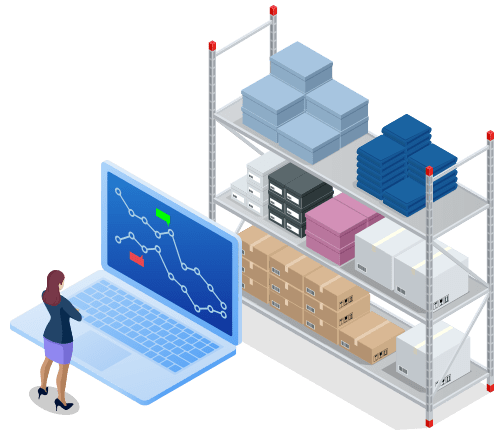In the world of customer service, where the quality of interactions can make or break a business, quality assurance in call centers stands as a cornerstone for success. This comprehensive guide delves into the fundamentals of quality assurance in call centers, offering a clear understanding of its significance, key components, and best practices.

What is Quality Assurance in Call Centers?
Quality assurance, often abbreviated as QA, is a systematic and ongoing process employed by call centers to ensure that customer interactions meet predefined standards and expectations. The primary goal of QA is to enhance the quality of customer service consistently. This entails evaluating and improving agent performance, aligning with organizational goals, and fostering customer satisfaction.
The Significance of Quality Assurance
Quality assurance plays a pivotal role in the success of call centers for several reasons:
1. Consistency: QA ensures that customer interactions remain consistent across all agents and channels. This consistency is essential to creating a unified and positive customer experience.
2. Customer Satisfaction: Satisfied customers are more likely to be loyal and recommend a company to others. By maintaining a high level of service quality, call centers contribute directly to customer satisfaction.
3. Compliance: Many industries, such as finance and healthcare, have strict compliance regulations. QA helps call centers ensure they are adhering to these rules, reducing the risk of legal issues and fines.
4. Employee Development: QA programs provide a framework for employee development. Through constructive feedback and coaching, agents can continuously improve their skills and enhance their performance.
The Key Components of Quality Assurance
To implement an effective quality assurance program in call centers, it’s essential to understand its key components:
1. Call Monitoring: Call monitoring is the cornerstone of QA. It involves supervisors listening to or reviewing recorded calls to evaluate agent performance. Supervisors assess adherence to scripts, professionalism, problem-solving abilities, and adherence to company policies and industry regulations.
2. Performance Metrics: To evaluate agent performance, it’s crucial to establish and track key performance indicators (KPIs). These KPIs may include metrics like first-call resolution, average handling time, customer satisfaction scores, and more.
3. Agent Feedback: Providing agents with constructive feedback is a critical aspect of QA. Supervisors should communicate strengths and areas for improvement, offering guidance for ongoing development.
4. Calibration Sessions: To ensure fairness and consistency in the evaluation process, call center teams often conduct calibration sessions. During these meetings, QA teams and supervisors discuss the evaluation process and share insights on how to score calls consistently.
5. Root Cause Analysis: In cases of recurring issues, QA teams perform root cause analysis to identify the underlying problems and recommend appropriate solutions. This helps in preventing similar issues from reoccurring.
6. Training and Development: QA also plays a vital role in agent training and development. By identifying areas where agents can improve, call centers can tailor their training programs to address these specific needs.
Implementing Quality Assurance
Implementing a successful quality assurance program in a call center involves several key steps:
1. Define Objectives: Clearly define your quality assurance objectives. What do you aim to achieve with this program, and what are the specific criteria for evaluating agent performance?
2. Establish Standards: Develop a set of performance standards and guidelines that agents should follow during customer interactions. These may include script adherence, call etiquette, and regulatory compliance.
3. Create Evaluation Forms: Develop evaluation forms that supervisors can use to score agent performance. These forms should align with the established standards and KPIs.
4. Monitor and Evaluate: Regularly monitor and evaluate calls, emails, chats, or any other forms of customer interactions. Provide feedback to agents based on their performance.
5. Training and Coaching: Offer training and coaching to agents based on their performance evaluations. This helps them improve their skills and deliver better service.
6. Continuous Improvement: QA should be a continuous process. Regularly review and adjust your QA program to ensure it remains effective and aligned with changing customer expectations.
Challenges in Quality Assurance
While quality assurance is essential, it’s not without its challenges. Call centers often face obstacles in implementing and maintaining effective QA programs. Some common challenges include:
1. Scalability: As call centers grow, managing QA for a large number of agents and customer interactions can be challenging. Maintaining consistency in evaluations becomes more complex.
2. Subjectivity: Evaluating agent performance can be subjective, leading to potential bias in scoring. Calibration sessions and clear evaluation criteria help mitigate this issue.
3. Agent Resistance: Some agents may resist feedback and coaching, making it harder to implement QA improvements. Clear communication and a positive feedback culture can help overcome this resistance.
4. Technology: Implementing the right technology to record, store, and review interactions is crucial. Inadequate technology can hinder the QA process.
Conclusion
Quality assurance in call centers is not just an optional component of customer service; it’s a fundamental aspect that directly impacts customer satisfaction, employee development, and overall success. By adhering to established standards, continuously monitoring and evaluating agent performance, and providing constructive feedback, call centers can create a consistent and high-quality customer experience. In an era where customer service sets businesses apart, quality assurance software plays a pivotal role in creating and maintaining positive customer interactions.








